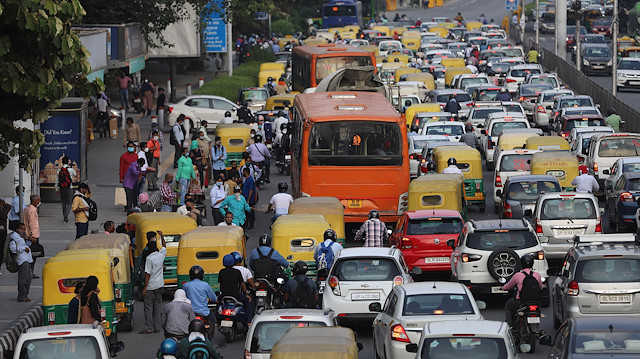
India enforced one of the world’s most stringent lockdowns in March to check the spread of the coronavirus.
The shutdown took effect four hours after Prime Minister Narendra Modi’s announcement and created chaos and confusion as Indians were totally unprepared.
All economic activities came to a standstill. More than 140 million migrant workers in big cities were suddenly left without work as shops, factories and establishments shut down.
In the COVID-19-hit months of April to June, India's GDP shrank 23.9% year-on-year. Although the pandemic turned into a financial crisis and rendered millions jobless, the virus spread continues unbridled.
India has the world’s second-largest coronavirus caseload behind the US, with more than 5.8 million infections and greater than 92,000 deaths. New cases are being detected regularly with no relief in the foreseeable future.
India scaled a historic peak in the fight against COVID-19 when for the first time a record 1,492,409 tests were conducted Sept. 24, taking cumulative tests to 68,928,440. But public health experts are of the view that the country has the lowest testing rate compared to other top 10 virus-hit nations.
According to Amulya Nidhi, national co-convener of the People's Health Movement (Jan Swasthya Abhiyan), India has been very slow in scaling up testing facilities although mass testing is key to containing the virus spread.
"India has been conducting 49,834 tests per million which is much less compared to other nations,” Nidhi told Anadolu Agency.
"During the lockdown, we should have boosted our health infrastructure. But we did not gear up to deal with the pandemic's public health challenge. That is why today we are seeing an exponential rise in the number of cases across the country," said Nidhi.
He said currently India has been recording the world's largest daily increases in coronavirus and more people are succumbing to the virus every day here than in any other country.
"We had an opportunity to prepare ourselves during the lockdown, but we could not utilize it," he said. “We have hospitals and health facilities only in urban areas. But now the coronavirus has spread in rural areas, but the government has no program to contain, mitigate or delay the spread of the pandemic in villages where health facilities are almost non-existent.”
Another health expert, Amitav Guha, said: "The virus first spread in China’s Wuhan. A country like Vietnam won the battle against the virus through extensive contact tracing and isolation, but our government's priorities were different at that time."
"This is the reason why a country like Vietnam defeated the virus, but today corona is becoming uncontrollable in our country. The cases of coronavirus are increasing unabated," he told Anadolu Agency.
However, Dr. T. Mariappan, a former scientist with the Indian Council of Medical Research (ICMR), said India had not been unsuccessful in its endeavors to check the virus.
“India has a very large population that is spread across different geographical regions. India is one of the most densely populated countries in the world. The government of India has been trying to stop the spread of the virus through a multi-pronged strategy with the participation of all state governments,” he said.
Mariappan said India has urban and rural populations and more people reside in villages than cities. But most people do not follow the necessary precautions to curb the virus as there is a lack of awareness and people are also careless. So we see many people, who do not maintain physical distancing, do not wear masks, or use sanitizer."
He explained further: “Another important reason for the rise in cases is the movement of people especially elderly people who suffer from ailments like asthma, hypertension, tuberculosis, diabetes, etc. These people are more vulnerable to COVID-19 and their recovery rate from the disease is also poor.”
However, the situation in many states is such that authorities had to impose a local lockdown for a few days. The Central Indian state of Chhattisgarh imposed a total lockdown in 11 districts from Sept. 21 to 28 amid a rise in the number of cases. Similarly, many other states have imposed lockdowns in affected districts and areas.
The government claims they have been successful in controlling the pandemic but statistics tell a different story.














